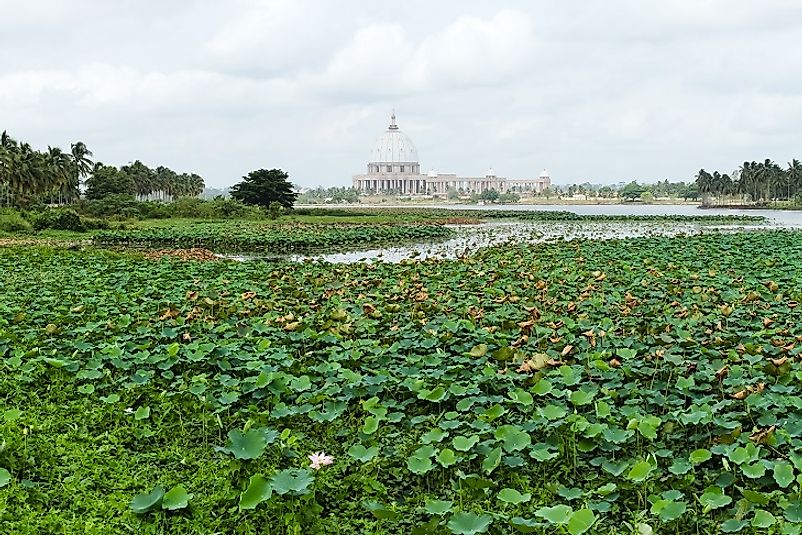Ecological Regions Of Ivory Coast

Ivory Coast, also known as the Republic of Cote d’Ivoire, is one of the West African countries. It borders Guinea, Liberia, Mali, Ghana, and Burkina Faso. Along the southern part of the country is located the Gulf of Guinea. Ivory Coast lies between latitude 4 degreesand 11 degrees North, and 2 degrees and 9 degrees West. The terrain of the country is plateau with the southeastern region marked by coastal inland lagoons and the southwest region covered with a tropical moist forest. The climate of Ivory Coast is warm and humid ranging from equatorial to tropical. The country experiences three seasons throughout the year. The ecological regions of Ivory Coast are looked at below.
Eastern Guinean Forests
The Eastern Guinean forests cover the lowland forests which extend from the Gulf of Guinea and western regions of Ivory Coast to the shores of Lake Volta in Ghana. A few patches of the ecoregion are found in the east and inland of Togo and Benin. Eastern Guinean forests ecoregion is separated from the Western Guinean Forest and transition to Guinea Forest–Savanna Mosaic in the east. The area receives an average annual rainfall of more than 2000 millimeters throughout. Eastern Guinean forests are home to over 8,000 vascular plant species, 780 species of birds, 1,000 mammal species mostly primates, 200 reptile species, and several fish species. Human activities such as logging, clearing land for cultivation, poaching, mining, and fishing has led to a significant destruction of the rich species of Eastern Guinean forests ecoregion. The region has been included in Guinean Forests of West Africa biodiversity hot spot of the Conservation International.
Eburneo
The Eburneo ecoregion covers parts of Burkina Faso, Guinea, Ghana, and Ivory Coast in West Africa. The ecoregion is characterized by Bandama, Sassandra Rivers, and Comeo which traverse floodplains as they flow towards the Atlantic Ocean. The rivers form an extensive lagoon which extends along the coastline. The rivers flow parallel to the plateau in the northern part of the ecoregion before joining to the south toward the coast. The southern part of Eburneo ecoregion experiences wet climate with an average annual precipitation of 2,300 millimeters while the northern part of the ecoregion experiencing long rainy seasons between May and July. The vegetation cover in this ecological region is predominated by Sudanian Savannah woodland and forest-savanna mosaic. Eburneo ecoregion is home to over 130 fish species with ten endemic species, several species of amphibians and reptiles. Uncontrolled fishing and river pollution are the major threats facing the ecoregion.
Guinean Forest-Savanna Mosaic
The Guinean forest-savanna mosaic ecoregion is interlaced with bands of forests, grasslands, and savannas which cut across the West African region separating the Guinean rainforest and the Sudanian Savannah. The boundaries of the Guinean forest-savanna mosaic follow the rain forests and grassland vegetation. The ecological region covers a total area of 675,000 square kilometers of West Africa countries including Ivory Coast, Nigeria, Gambia, Benin, Senegal, Guinea, and Gambia. The ecoregion is highly dynamic with the proportion of the forest varying significantly over time. Guinean forest-savanna mosaic offers habitats for charismatic fauna species including lizards, emerald starling, spiders, and patas monkey. Although parts of Guinean forest-savanna mosaic ecoregion especially the park is protected, logging and clearing of land for agriculture and settlement are the major threats facing this ecoregion.
Ecological Regions Of Ivory Coast
| Ecological Regions of Ivory Coast (as per World Wide Fund for Nature) | Biome |
| Ashanti | Nilo-Sudan Freshwater |
| Eastern Guinean forests | Tropical and Subtropical Moist Broadleaf Forests |
| Eburneo | Nilo-Sudan Freshwater |
| Guinean forest-savanna mosaic | Tropical and Subtropical Grasslands, Savannas, and Shrublands |
| Guinean mangroves | Mangrove |
| Guinean montane forests | Tropical and Subtropical Moist Broadleaf Forests |
| Gulf of Guinea | Marine |
| Mount Nimba | Nilo-Sudan Freshwater |
| Southern Upper Guinea | Upper Guinea Freshwater |
| Upper Niger | Nilo-Sudan Freshwater |
| Volta | Nilo-Sudan Freshwater |
| West Sudanian savanna | Tropical and Subtropical Grasslands, Savannas, and Shrublands |
| Western Guinean lowland forests | Tropical and Subtropical Moist Broadleaf Forests |











